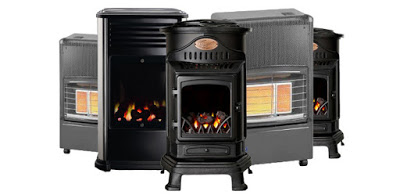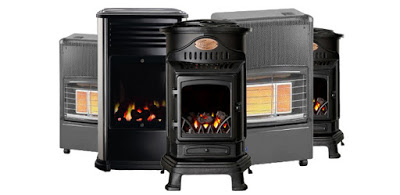The recent death of two British residents of Cyprus, with a possible cause of the use of a gas heater, brings to the surface again the use of gas heaters, which are kept in the home of a large number of people.
However, LPG, either due to a problematic heater or due to its misuse by the owners, can be fatal, as has happened several times in the past. Especially when used during bedtime, or in small rooms.
The director of the Cyprus Electromechanical Service, Loukas Timotheou, stated that consumers must be vigilant and observe that for every device they buy, it meets the required safety standards.
"Under the law, the overall responsibility lies with the manufacturer and the trader who imports the product to Cyprus," he said. "What we do in the context of market surveillance, when and if we have a complaint, or in the context of a campaign of specific products in the market, is to go and check the devices.
People need to understand that the import of a product will not be banned. But the consumer must also be meticulous and check the markings of a device. "Not all products can be inspected, but he must also make sure that he has the required markings", he noted.
Mr. Timotheou noted that the Department of Electromechanical Services, as the Competent Authority for market surveillance in matters of safety of gas appliances, considers it useful to provide basic advice to consumers on the purchase and safe use of common gas heaters without a chimney. Referring to the special form of advice to consumers, provided by the Department.
As typically mentioned, LPG heaters must be marked with the following basic elements:
- The CE marking followed by the four-digit identification number of the notified body, which intervenes in the production control phase
- The name and mark of the manufacturer
- The brand name of the device
- The type of gas used
- Device category (ie Cat I, Cat II, or Cat III)
- All markings must be:
- Obvious
- Legible
- Indelible
- Durable and durable
- Do not remove easily
- As for the basic characteristics that a gas heater must have, it is made with a gas cylinder, which is placed on a special base at the back of the heater. The LPG supply pressure is controlled by a suitable pressure regulator applied to the cylinder. The operation control is usually done through three main switches: the main power switch, the volume control switch and the ignition switch. During the operation of the heaters, the generated exhaust gases are discharged directly into the heated space.
Finally, the heater must be equipped with:
- Flame monitoring device, which does not allow the flow of LPG, when there is no flame, and
- Carbon dioxide detector, so that in case of high concentration of carbon dioxide in the atmosphere, the gas supply is cut off automatically.
Symptoms of poisoning
According to the Cyprus Electromechanical Service, it is particularly important to emphasize that during the operation of the heaters, various exhaust gases are produced, such as carbon monoxide and nitrogen dioxide. These gases, which are colorless and odorless, can become dangerous to the health of consumers.
It is noted that the rate of production of pollutants depends on the capacity and size of the heater, as well as on its condition. The levels of pollutants that develop and accumulate in the room vary depending on the intensity of use of the heater, the size of the room and the adequacy of ventilation.
It is also stressed that high levels of pollutants can increase the chances of developing health problems in people with sensitive respiratory systems. Particularly in the case of old or out of order heaters which can malfunction, elevated levels of carbon monoxide can even cause death.
Symptoms of carbon monoxide poisoning include:
- Fatigue
- Shortness of breath
- Headache
- Dizziness
- Motion sickness
- Αδυναμία
- Confusion
- Chest pain
Never during sleep
To avoid unpleasant situations, such as exposure to pollutants, burns and fire, the Department of Electromechanical Services advises consumers and especially users of gas heaters such as:
- Always follow the manufacturer's instructions for use and maintenance
- Do not place clothes or other objects on the heater
- Do not place the heater near furniture and curtains
- Do not move the heater when it is running
- The heater is oriented towards the center of the room
- Use the heater only in well-ventilated areas and do not seal cracks in doors and windows
- Do not allow small children, the elderly or pets to touch the hot surfaces
- They close the gas supply from the main switch well after use
- Do not store solvents or pressure packages near the heater
- Do not stand too close to the heater
- Ensure that the heater is properly maintained and at regular intervals
- To replace the cylinder, move the heater to a well-ventilated area
- If they suspect or detect a gas leak, open the windows and doors, turn off the power at the main switch and go outside the building to breathe fresh air. Then contact the distributor of the appliance and do not use it again before it is checked by a distributor representative and before assuring them that the heater can be used safely.
- The heater must not be operated without supervision
- It should not be used in bedrooms, bathrooms, caravans and especially at bedtime.
- It is pointed out that there may be signs of a problem with the heater, symptoms such as yellow flame accompanied by smoke, abrupt extinguishing of the flame driver, loud noise during operation or noise during operation, signs of flame damage, such as discoloration of exterior walls, overheating walls, smoke stains around the heater and loose tiles.

